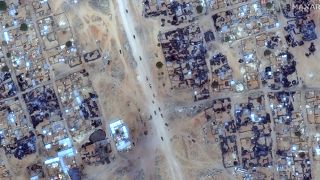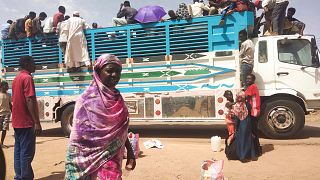Sudan
As Sudan grapples with the aftermath of its worst floods in a century, there is a glimmer of hope as the Blue Nile waters have started to drop.
The water and irrigation ministry said on Sunday, the waters had reached 17.67 metres (58 foot), but by Sunday the level went down to 17.36.
Sudan experiences heavy rains from June to October and faces severe flooding every year.
But officials said this year the highest waters were recorded in 100 years on the Blue Nile, which joins the White Nile in the capital Khartoum.
More than 100 people have been killed and hundreds of thousands have been displaced.
"More than 120,000 houses have been destroyed, either partially or fully. We're talking about more than 650,000 people affected," said Lena al-Sheikh, Sudanese Minister of Social Development.
"People are now in dire need of shelter, of health, of water and sanitation, of nutrition."
On Thursday the UN said that the floods had affected more than half a million people in Sudan, destroyed or damaged tens of thousands of homes.
It also warned the floods have raised the risk of water-borne disease outbreaks.
Sudan's government declared a three-month state of emergency earlier in September.











Go to video
Sudan: World Food Programme warns of hunger crisis, asks for more funding
Go to video
Dozens flee deadly RSF attacks in north Darfur as camps suffer heavy losses
Go to video
Heavy rains flood Congo's capital, killing at least 22 people
Go to video
Sudanese Al Hilal aims for victory against Al Ahly in the CAF Champions League quarter final clash
Go to video
Khartoum residents welcome army soldiers who reclaimed area from RSF
Go to video
Pics of the day: March 27, 2025